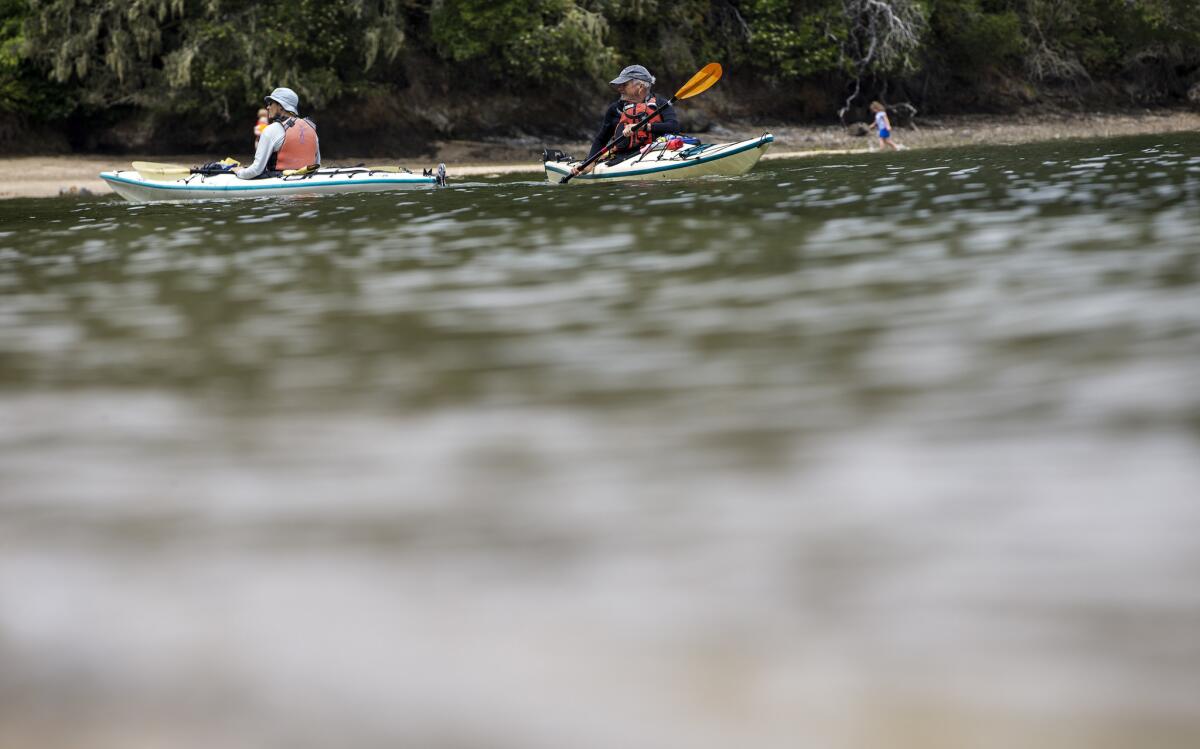Think of these liquid spots as the National Park Service’s water supply ... for recreation and relaxation

How does New Mexico cope?
Water covers just 0.2% of the Land of Enchantment, Census Bureau statistics show, making it the driest state by percentage of land area. It’s not that most of its 2.1 million residents can’t get a drink from the tap; ground and surface water see to that.
But New Mexico, like 15 other states, is landlocked. The broad middle swath of the country plus Vermont are missing out on the aural benefits of the ocean — the sound of waves, for instance, as they break on a beach in a sort of unsynchronized water ballet.
Those tones and their constancy are balm for the brain.
If this is so, the National Park Service holds the key to a 600,000-acre medicine cabinet.
The park service has gathered within its fold 10 national seashores that are protected in perpetuity. Point Reyes National Seashore in Marin County is the only West Coast entity, although one day there may be more, assuming coastal quibbling can be overcome.
Celebrating our national parks »
Also within its storehouse of 412 units, the park service has four national lakeshores, all on the Great Lakes, five national rivers and 10 wild and scenic riverways.
Geographically disparate, all share water as their common denominator.
For visitors, the appeal, at first glance, may be recreational opportunities — boating, swimming, fishing and more.
But you need not put forth any effort to enjoy the benefits of these watery wonderlands. You have only to listen.
Water sound is “high enough in amplitude that it blocks out other sounds,” said Erik Miller-Klein, an engineer and partner in A3 Acoustics in Seattle.
Traffic noises and the clack of shopping carts could be heard in the background as he talked while he walked toward a shopping center. But if he had been next to a water feature — a man-made waterfall, for instance — “you’d just hear sh-h-h-h, sh-h-h-h,” making conversations and almost anything else indistinguishable.
Couple that “masking” effect with an ocean’s rhythms — they are “probably very similar to a really good breathing pattern” that encourages relaxation, he said — and you have a sort of cocoon into which your brain can burrow with no more effort than cocking an ear.
The result of listening to that continuous soundtrack? A drop in blood pressure, which suggests relaxation, said Dr. Jennifer Derebery, an associate partner at House Clinic and a clinical professor of otolaryngology at UCLA.
Stress reduction is almost certainly an unintended consequence of the park service’s move to protect these seashores and their cousin, the lakeshores.
North Carolina’s Cape Hatteras was established in 1937 as the first national seashore to protect a unique environment and shelter its species, many now threatened or endangered, said Darrell Echols, acting deputy regional director for resource stewardship and science for the Southeast region of the National Park Service.
Everything at the beach is encouraging you to slow down.
— Erik Miller-Klein
But it was also a way to ensure that city dwellers would have an escape hatch.
“Not everybody had a car, and trains didn’t get to Hatteras, so it was an effort to get to the Outer Banks,” he said of those early visitors to that string of North Carolina barrier islands.
Hatteras “got them away from large urban areas to a wild place for a kind of experience like what some of our Western parks [visitors] were experiencing, which was some solitude, some opportunities to recreate by themselves without the influence of other people and other demands on their time.”
Sound familiar?
The seashores still sing a siren song. “Everything at the beach is encouraging you to slow down,” Miller-Klein said, noting that you’re probably also getting a dose of vitamin-D-rich sunlight that contributes to a feeling of well-being.
President Kennedy, addressing America’s Cup crews in Newport, R.I., on Sept. 14, 1962, just a day after designating Point Reyes as a national seashore, explained our bond with the water, with the waves.
“We all came from the sea,” said Kennedy, an avid sailor. “We have salt in our blood, in our sweat, in our tears. We are tied to the ocean. And when we go back to the sea, whether it is to sail or to watch it, we are going back from whence we came.”
Listen carefully and you’ll hear the ocean welcoming you home.
Freelance writer Rosemary McClure contributed to this report.
MORE NATIONAL PARKS
The sea caves of Apostle Islands National Lakeshore are portals to awe-inducing adventure
Want to hike Point Reyes? Try this four-day backpacking trip
Sign up for The Wild
We’ll help you find the best places to hike, bike and run, as well as the perfect silent spots for meditation and yoga.
You may occasionally receive promotional content from the Los Angeles Times.




